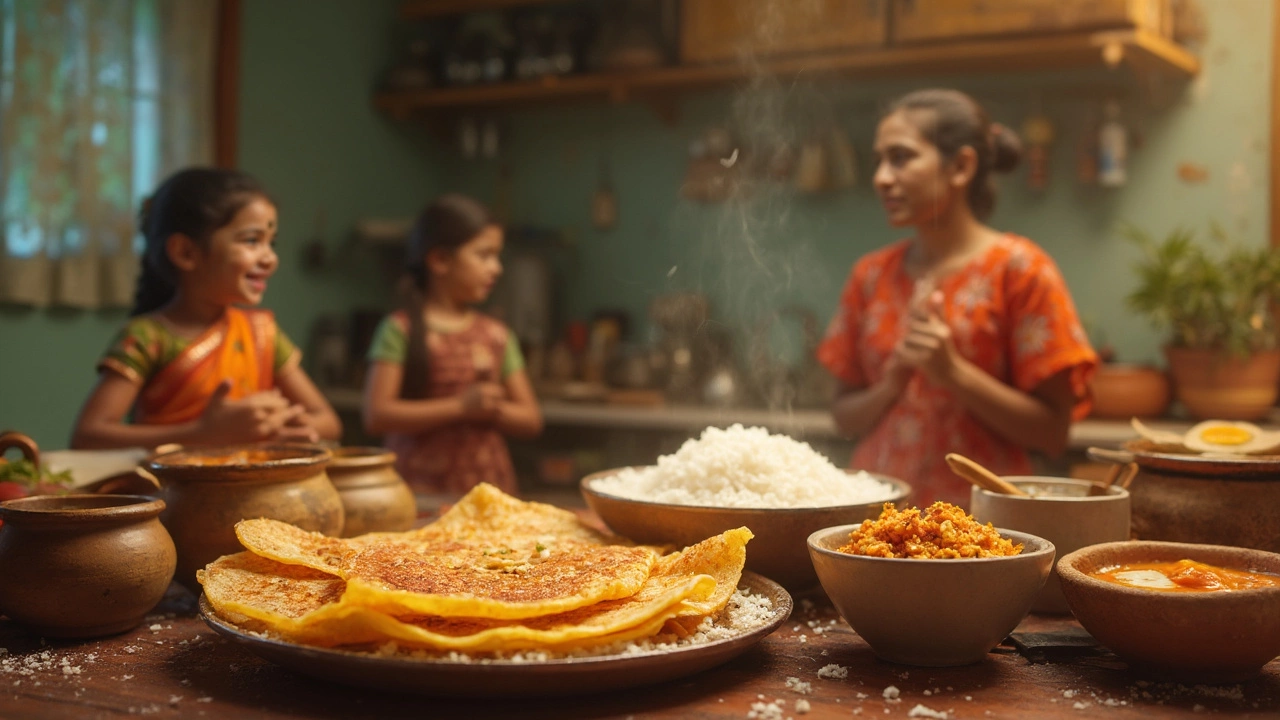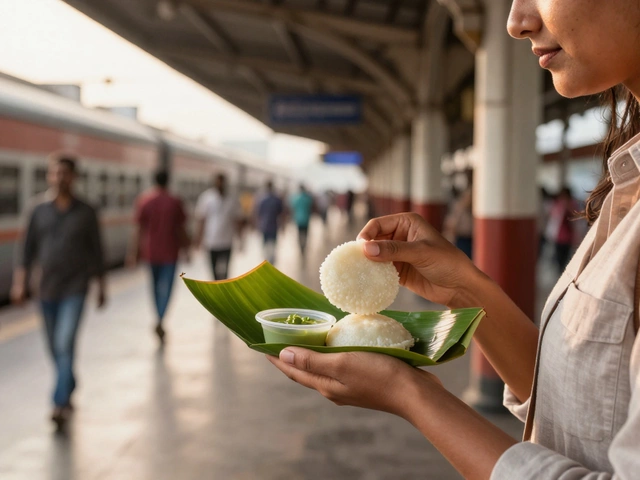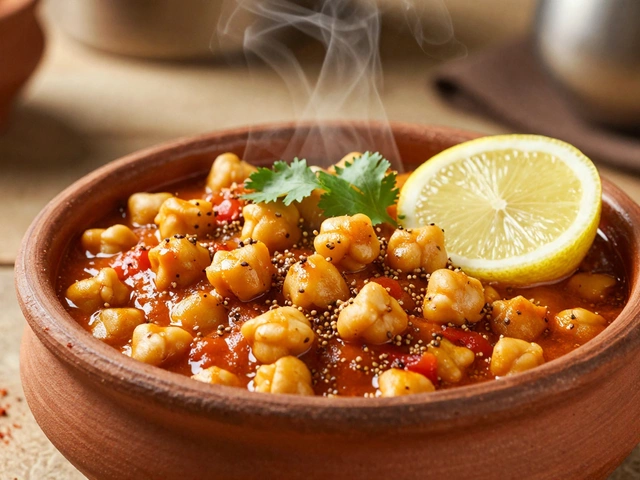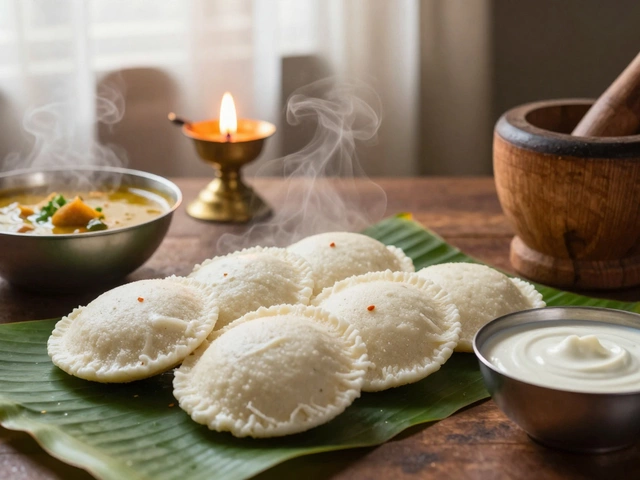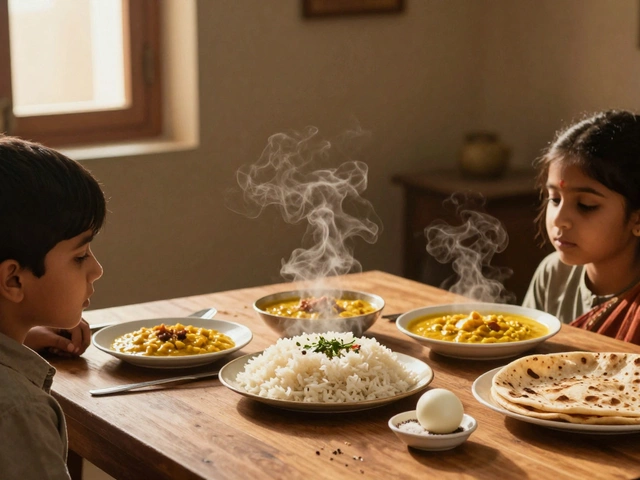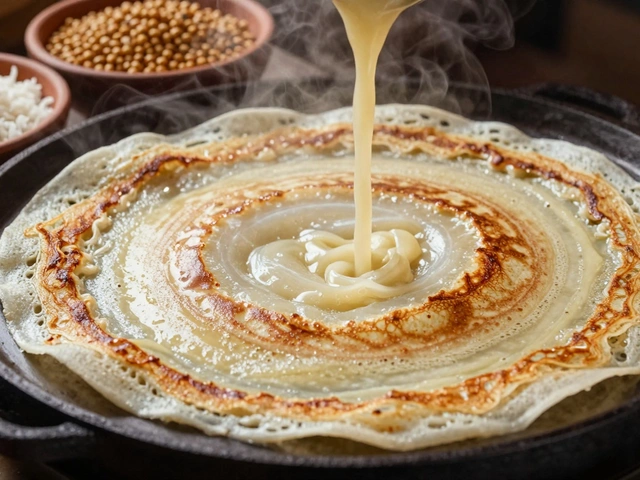Trying to figure out if dosa or rice is the smarter pick for your meal? You're not alone. Lots of us grew up eating both but rarely stopped to compare them health-wise. Sure, dosa and rice both start off with rice as a base, but once you grind, mix, and ferment, you’re working with two very different foods.
If you’re watching your diet for blood sugar, weight, or just overall health, these details actually matter. Some folks think dosa means fried carbs while plain rice seems 'safe.' But things aren't that simple. There’s more going on under the surface, especially when it comes to what fermentation does to your food—and your gut.
Let’s break down how dosa stacks up against plain rice so you know exactly what you’re putting on your plate. Whether you’re making dosa batter from scratch or spooning out steamed rice, understanding these basics helps you skip the guesswork and actually eat better.
- What Exactly Is Dosa (and Rice)?
- Nutrition Face-Off: Dosa vs Rice
- How Fermentation Changes the Game
- Smart Tips to Make Dosa Even Healthier
- Choosing What’s Right for You
What Exactly Is Dosa (and Rice)?
Dosa is basically a thin, crispy pancake made from a fermented batter. This batter usually mixes rice with urad dal (that’s split black gram). The mix sits out for 8–12 hours to ferment, which is a step a lot of people skip when they’re in a hurry, but it’s key for taste and gut health. After that, the batter goes onto a hot griddle with just a bit of oil, and it cooks up fast. You’ll mostly find dosa in South Indian kitchens, but honestly, it’s gained fans all over the world.
Rice, on the other hand, is the un-fermented, plain version. You rinse it, boil or steam it, and serve it up—no drama. For most families in Asia, rice is a staple, eaten almost every day. It can be white, brown, or even red rice, depending on your preference. White rice is the most common at the dinner table, especially in Indian homes.
Here’s a quick table showing what both usually look like per serving (let’s say about 100 grams each):
| Food | Main Ingredients | Calories | Protein (g) | Carbs (g) | Fat (g) |
|---|---|---|---|---|---|
| Dosa | Rice, urad dal, water | 120 | 3 | 20 | 2 |
| Plain Rice | Rice, water | 130 | 2.5 | 28 | 0.3 |
That fermentation step in dosa does more than just boost flavor. It slightly ups the protein and makes the nutrients easier to absorb. Plus, with dosa, you’re getting that protein hit from urad dal—not just carbs. With plain rice, you’re getting almost all carbs and barely any protein or fat. In short, both foods start out similar but end up totally different once you look at what’s on your plate.
- If you want to keep things simple and filling, rice fits the bill.
- If you want a mix of carbs, protein, and gut perks, dosa packs extra benefits.
Next time you’re cooking, just think about what your plate needs most: Plain, straight-up carbs from rice? Or that extra dosa bonus from fermentation and dal?
Nutrition Face-Off: Dosa vs Rice
Here’s where things get interesting. At first glance, both dosa and rice seem similar since rice is the main ingredient in both. But honestly, side by side, the nutrition tells another story.
Let’s look at some real numbers for one serving (around 100 grams each):
| Dosa (Plain) | Cooked White Rice | |
|---|---|---|
| Calories | 165 | 130 |
| Carbs (g) | 30 | 28 |
| Protein (g) | 4.5 | 2.7 |
| Fat (g) | 3.6 | 0.3 |
| Fiber (g) | 1.1 | 0.4 |
Dosa pulls ahead with about 60% more protein and over double the fiber for the same amount. That’s because dosa isn’t just rice—classic dosa batter mixes urad dal (split black gram) with rice. This combo gives you a more complete set of amino acids, which is good news for your muscles if you’re relying on plant-based protein.
You might notice the higher fat in dosa. That mostly comes from the oil used for cooking, but it’s usually still a small amount if you use a non-stick pan or brush lightly with oil.
Rice is basically pure carbs with almost no protein, fat, or fiber. On its own, dosa just gives you a better nutritional bang for your buck—especially for keeping you full longer.
- If your blood sugar spikes easily, dosa is the safer bet. Fermentation lowers the glycemic index, so it won’t hit your blood sugar as hard as plain white rice.
- For folks who want to lose weight, dosa’s extra protein and fiber can help you stay satisfied and avoid snacking.
- Need more plant protein in your diet? Dosa’s got your back thanks to the dal.
One thing people miss: brown or red rice is a different story. They have more fiber than white rice, but still don’t bring in much protein.
Even the way you eat matters. If you pair dosa with sambar (full of lentils and veggies), you’re adding more protein and fiber to the meal. Rice usually shows up with heavier curries or fried sides, making the whole plate denser in calories and lower in protein.
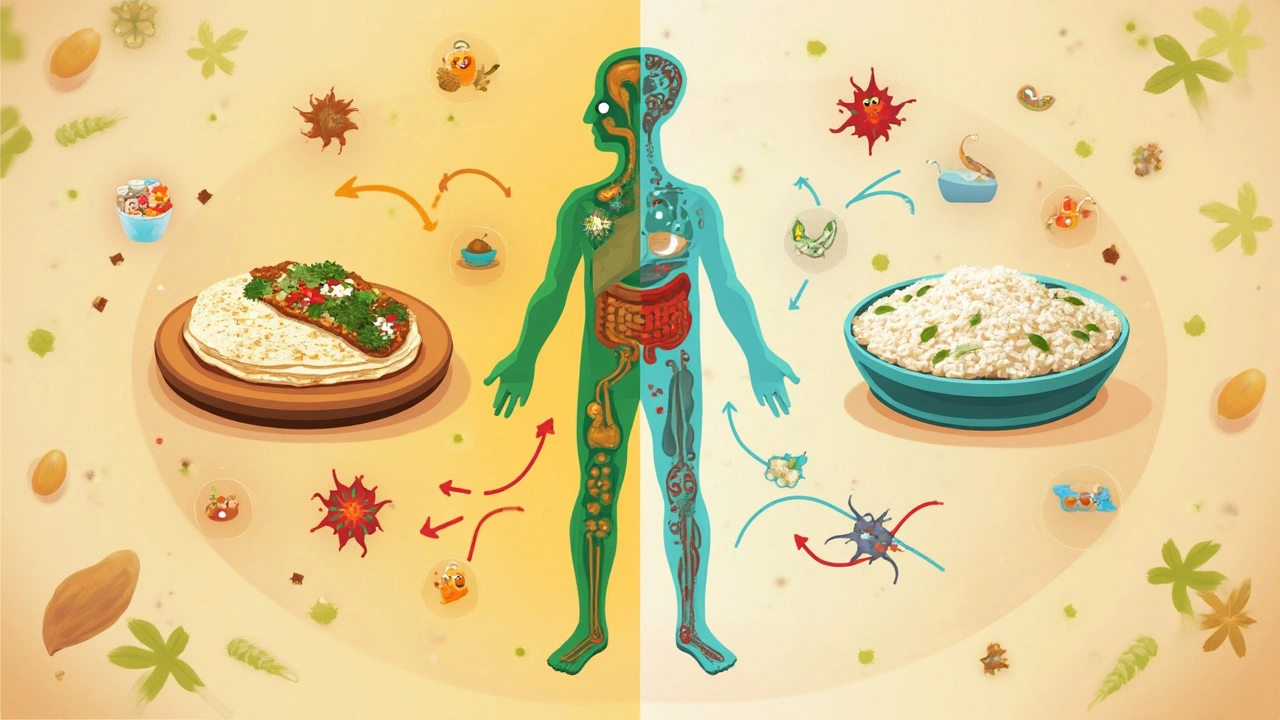
How Fermentation Changes the Game
Fermenting dosa batter isn’t just a kitchen ritual—it totally shifts the nutrition profile compared to plain rice. When you leave ground rice and lentils out to ferment, natural bacteria and yeast get to work. Their job? Breaking down some complex carbs and proteins, making your dosa easier to digest and even more nutritious.
Here’s what actually happens during fermentation:
- Dosa batter develops healthy bacteria called probiotics, the same type that’s in yogurt. These can help your gut health and might explain why fermented foods often leave you feeling lighter compared to a big bowl of plain rice.
- B vitamins get a big boost. Studies from Indian food science labs show that fermented batter has more B12 and folic acid. Those are good for your brain and your mood.
- Phytates (stuff in raw lentils and rice that block nutrient absorption) drop way down. So, your body grabs more iron and zinc from dosa than from non-fermented rice dishes.
If you look at blood sugar, dosa tends to be easier on you than plain white rice. Yes, both use rice, but fermentation lowers the glycemic index a bit. That means dosa won’t spike your blood sugar as fast as a spoon of regular steamed rice.
| Food | B12 Content (mcg/100g) | Glycemic Index (approx) | Probiotic level |
|---|---|---|---|
| Dosa (fermented) | 0.5 | 70 | High |
| Plain White Rice | 0.0 | 77 | None |
One thing most people miss: because fermentation starts breaking things down, dosa can feel gentler on your stomach, especially if you struggle with gas or bloating from lentils. And if you let your batter ferment long enough (at least 8 hours, warmer kitchens work faster), you usually end up with an even better flavor, too.
Smart Tips to Make Dosa Even Healthier
You can totally upgrade your dosa game with just a few tweaks to the batter and how you cook it. Whether you’re making a quick breakfast or meal prepping for the week, these tips make your dosas better for your body and still super tasty.
- Add more protein: Traditional dosa batter is mostly rice, but you can toss in extra lentils (like urad dal or moong dal) to add both protein and fiber. Some people add a handful of soaked chana dal, which gives a nice flavor boost too.
- Swap white rice for brown rice or a mix: Using brown rice instead of only white boosts the fiber and helps you feel full longer. Just soak it longer since it’s a bit tougher.
- Throw in veggies: Add grated carrots, chopped spinach, or even beets right into the batter, or sprinkle them on top when you spread the dosa. This adds vitamins plus a bit of crunch and color.
- Go easy on oil: You really just need a thin swipe of oil on a good nonstick or cast-iron tawa. Too much oil adds unnecessary calories.
- Ferment it right: Longer fermentation (8–12 hours, depending on the weather) does more than just give that classic tang. It actually boosts the amount of good-for-you bacteria and can make the batter easier to digest.
- Try millet: Millets like ragi, bajra, or jowar blended with rice in your batter can lower the glycemic index, meaning they won’t spike your blood sugar as much. Plus, they bring in extra minerals.
Here’s a quick look at how homemade dosa stacks up with these upgrades versus a basic white rice dosa:
| Plain Rice Dosa (per piece) | Healthy-Boosted Dosa (per piece) | |
|---|---|---|
| Calories | 95 | 90 |
| Protein | 2g | 4g |
| Fiber | 0.5g | 2g |
| Fat | 2.5g | 2g |
| Glycemic Index | High | Medium |
If you’re packing lunchboxes or trying to avoid carb crashes, these simple swaps in your dosa batter pay off fast. Play around and see what works—you won’t notice the difference in taste, but your stomach (and energy) will thank you.

Choosing What’s Right for You
Picking between dosa and rice isn’t about one being ‘good’ and the other ‘bad.’ It really depends on your needs and what your body likes. If you’re someone looking for gut-friendly options or trying to support steady energy, dosa can have the edge because of fermentation. That process introduces good bacteria and can make it easier to digest, especially for folks who sometimes get bloated after having plain rice. Plus, dosa brings in a trickle of protein from the dal (lentils) in the batter, which plain rice just can’t match.
Here's something a nutritionist from Bangalore, Dr. Radhika Nair, said in an interview with HealthifyMe:
"Fermented foods like dosa provide not only better digestibility but also a richer micronutrient profile, especially B vitamins, compared to plain steamed rice."
It’s also smart to think about how each fits your daily routine. On days with lots of activity, rice may give you the quick carbs you need, while dosa keeps you fuller for longer thanks to the slightly higher protein and slower digestion. Diabetics often find dosa friendlier for blood sugar since fermentation lowers the glycemic load. Here’s an easy comparison to keep it real:
| Per Serving | Dosa (1 medium) | Rice (1 cup) |
|---|---|---|
| Calories | 120 | 206 |
| Carbs (g) | 20 | 45 |
| Protein (g) | 3-4 | 4 |
| Fiber (g) | 1 | 0.6 |
| Glycemic Index | Moderate | High |
| Fermentation Benefits | Yes | No |
Bottom line? If your goal is variety, go ahead and rotate both into your meals. On days you need light, quick energy, rice does the job. When you’re looking for better digestion or a little more staying power, dosa wins. Mixing in veggies with either can also help you level up your meal. It’s not just about picking one forever; it’s choosing what works for you, right now.
- Trying to lose weight? Watch how much oil you use in your dosa pan.
- Managing blood sugar? Go for dosa over plain rice, or better yet, switch to brown rice sometimes.
- Craving variety? Use millets or oats in your batter, or try adding spinach to your dosa or as a side for rice.
